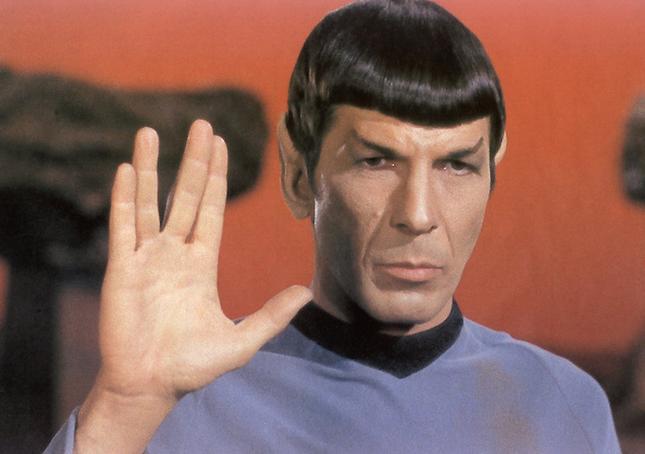Leonard Nimoy, Spock of ‘Star Trek,’ Has Beamed Up
By • March 11, 2015 0 2312

When our friends or mentors, our parents or children, lovers or acquaintances, famous people we know personally not at all, or even our pets die, we weep, we mourn, we grieve, we gather in ceremonial aspects and places and sing and weep some more.
When a Vulcan dies, Vulcans do not weep.
That would be illogical.
Mr. Spock, first mate of the Federation Starship Enterprise, died last Friday morning.
The whole world wept.
Mr. Spock might have disapproved.
Leonard Nimoy, the actor who portrayed the inscrutable, pointy-eared Vulcan for three seasons and a number of films, would no doubt have been amused by the reaction, but not surprised. Nimoy, who died at the age 83 of pulmonary issues, long ago accepted that the resolute, often forbidding but immensely steadfast Vulcan would be a kind of alter ego, complete with Federation uniform and all the accumulated Star Trek minutia. that would accompany him to the grave in the kind of pop cultural mind-melt practiced by Vulcans when they wanted to really get to know someone well. Not to mention the “live long and prosper” sign off with a whiff of hippie happiness and the hand sign which resembled an intellectual’s version of the hand jive.
Nimoy, the son of Ukrainian Orthodox Jews, aspired to an acting career early on and had one, although a fair to middling one, until 1966, when he snared the role of Mr. Spock, the second-in-command of the Enterprise under Captain James Kirk on “Star Trek,” a series envisioned and made real by producer-writer Gene Rodenberry, whose mind-set seemed often to come straight from the counter culture of the times.
The series in which Nimoy was the only alien on the ship that featured an American melting pot of a gorgeous African American, an Asian officer, a Russian and a Scot engineer with a Scottish accent as thick as Sean Connery’s chest, sent its crew into places “where no man had gone before” by way of warp speed that let the Enterprise time-hop, jump in and out of worm holes (and black holes), and encounter all kinds of planets filled with aliens, left over earthlings starting over, and little things called trebles. It championed a brotherhood of man among a universe filled with aliens, warned against environmental disasters and preached—sometimes with tasers at the ready—tolerance. It was also a kind of mind-blowing fun that seemed to have been produced in someone’s back yard.
It didn’t matter. Although the series lasted only three years—enough to go into syndication where it took in aspects of a cult—it re-emerged in film form, big expensive Hollywood blockbusters. Spock, in fact, died in one of them only to re-emerge in another. Other series appeared, such as “The Next Generation,” with a new captain, a bald and more cerebral “Make it So” Jean-Luc Picard, played by the Shakespearean actor Patrick Stewart. There were comic books, more movies (including a current series that so far number two), cartoons and books.
Star Trek got into our heads—soon Trekkie conventions, in which hordes of people dressed as characters from the series showed up, shared stories, exchanged knick knacks and generally took advantage of the opportunity of never having to grow up.
Through it all, Nimoy never quite shed the shadow of Spock, and then finally stopped trying as in two books he wrote: “I am Not Spock” and “I Am Spock.”

